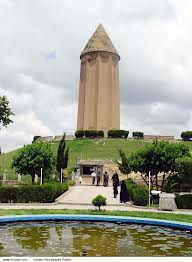ID :
291998
Sat, 07/06/2013 - 08:44
Auther :
Shortlink :
https://oananews.org//node/291998
The shortlink copeid
Iran Ranks 14th On UNESCO’s World Heritage List

Tehran, July 6, IRNA – Iran ranks 14th in the world in terms of national heritage registration on the UNESCO’s World Heritage List, said an official.
Deputy head of Iran’s Cultural Heritage, Handicrafts and Tourism Organization made the remarks in a ceremony held to commemorate the first anniversary of Qabous Tower’s registration.
Atousa Momeni stressed that Iran ranks fifth in the Asia-Pacific region and first in the Middle East in that end.
Momeni noted that the achievement has been made while Islamic Revolution and Iraq-imposed war prevented the country from registering its heritage on the UNESCO’s list.
Golestan Palace is the 16th Iranian heritage registered on the list and this is a source of honor for the country, she said.
Qabous Tower of Gonbad Kavous, Golestan province, is the tallest brick tower of the world registered on the UNESCO’s list last year, adding that it is a valuable example of the Islamic architecture.
Momeni said the ICHHTO has voiced its willingness to establish a museum in Gonbad Kavous and allocate budget for renovating the city’s historical heritages.
Speaking in the same ceremony, Mohammad Reza Shahraki, the head of the city’s Islamic council, said Iran enjoys high potential in the field of tourism and this should be used to attract more tourists.
Shahraki said fruitful efforts have been made in the city, which has many historical heritages like Jorjan Historical City, three international lagoons and a horse-riding complex.
Officials from the city’s governorate, municipality, Islamic City Council and cultural heritage department attended the commemoration ceremony.
Qabous Tower was built in 1006 AD on the order of Ziyarid ruler, Shams-ol-Ma’ali Qabous ibn Wushmgir, near the ruins of the ancient city of Jorjan in northeast Iran.
The monument is an example of cultural exchange between Central Asian nomads and the ancient civilization of Iran, and is the only remaining structure of Jorjan, a former center of arts and science destroyed during the invasion of Mongols in the 14th and 15th centuries.
The UNESCO registered the 53-meter-tall tower on its World Heritage List as an outstanding and innovative example of Islamic architecture in 2012.
On June 24, the Permanent Ambassador of Iran at the United Nations Educational, Scientific, and Cultural Organization (UNESCO) Mohammad-Reza Majidi informed IRNA that Tehranˈs Golestan Palace was recently registered in the UNESCOˈs global heritage list.
Majidi said in an interview with IRNA, “In the course of the 37th Conference of the UNESCO Cultural Heritage on Friday, that started on June 14th, in Phnom Penh, Cambodia, on the morning of Sunday, June 23rd, Golestan Palace was registered in the UNESCO global heritage list as the 16th Iranian monument in that list.”
Majidi added, “The ongoing Conference of the UNESCO Cultural Heritage Committee had great achievements for our country, which in addition to registering the Golestan Palace, we can refer to the re-registering of Bam Arg in that list after it had earlier been deleted from the UNESCO list.”
He said, “Earlier, too, 15 Iranian historical sites, including Choghazanbil, the Persepolis Palace, Pasargad, Takht-e Soleyman, Isfahan’s Imam Square, Bam Arg, the Soltaniyyeh Dome, the Bosotoun Plaque, Sheikh Safiyeddin Ardebili’s Shrine, the historical complex of Tabriz bazaar, a number of Iranian gardens, the Congregational Mosque of Isfahan, and Gonbad-e Kavous have been registered in the UNESCO’s global heritage list.”
Golestan Palace is a historical monument in Tehran dating back to Qajar era, comprised of various parts such as the marble throne, Karim Khan’s Cozy Corner, Salam Hall, the Mirror Hall, the Dining Hall, the Marble Hall, the Imperial Bedrooms Building, the Shams ol-Emareh Palace, the Windy Building, the Diamond Hall, the Abyaz Palace and Chador Khaneh./end





